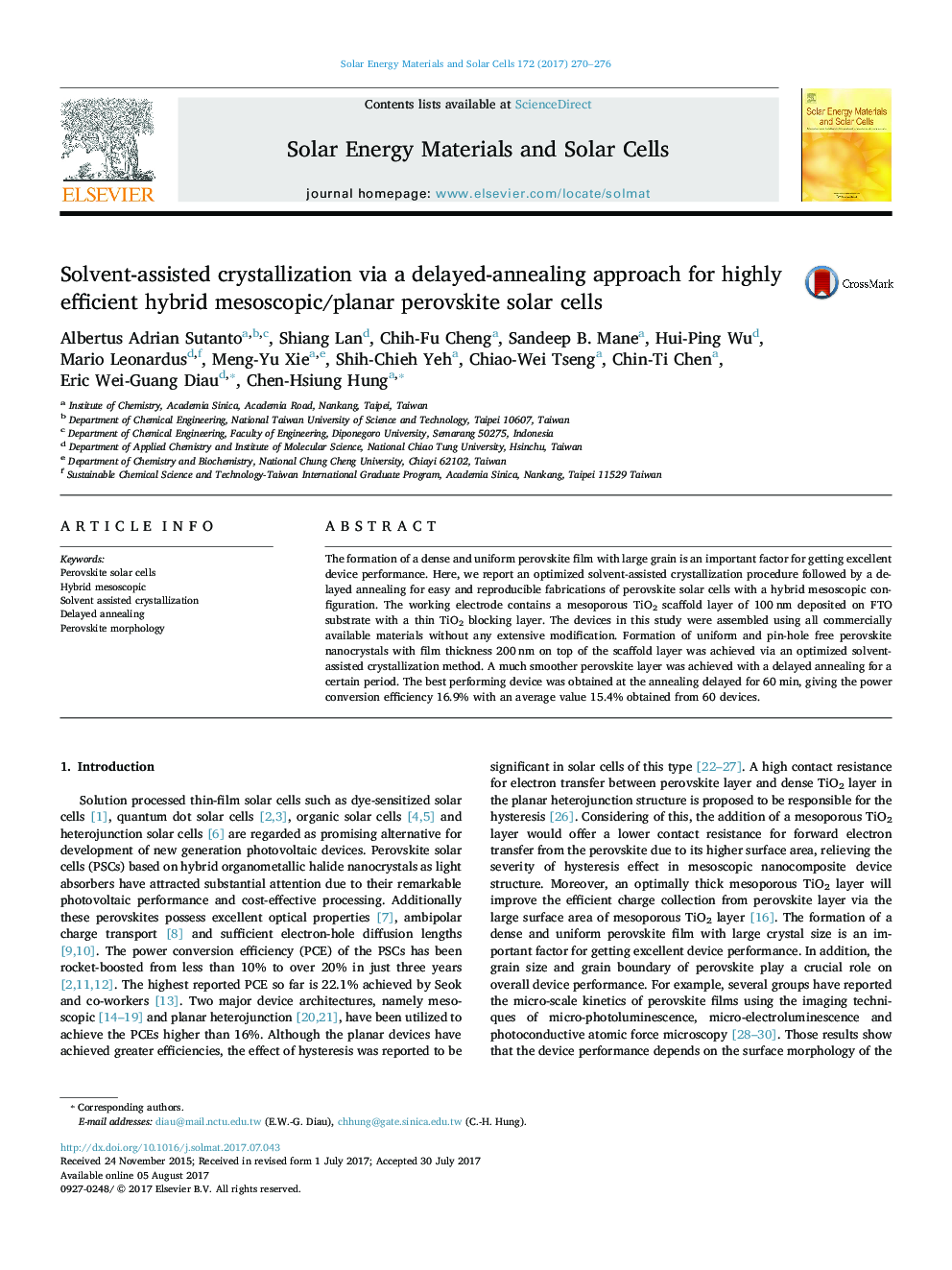| Article ID | Journal | Published Year | Pages | File Type |
|---|---|---|---|---|
| 6456939 | Solar Energy Materials and Solar Cells | 2017 | 7 Pages |
â¢A new approach to improve the morphology and performance of CH3NH3PbI3 perovskite.â¢Optimization of one step spin-coating solvent-assisted crystallization method.â¢Effect of delayed annealing on surface morphology of perovskite is revealed.â¢A simple procedure to obtain reproducible devices with all commercial materials.
The formation of a dense and uniform perovskite film with large grain is an important factor for getting excellent device performance. Here, we report an optimized solvent-assisted crystallization procedure followed by a delayed annealing for easy and reproducible fabrications of perovskite solar cells with a hybrid mesoscopic configuration. The working electrode contains a mesoporous TiO2 scaffold layer of 100Â nm deposited on FTO substrate with a thin TiO2 blocking layer. The devices in this study were assembled using all commercially available materials without any extensive modification. Formation of uniform and pin-hole free perovskite nanocrystals with film thickness 200Â nm on top of the scaffold layer was achieved via an optimized solvent-assisted crystallization method. A much smoother perovskite layer was achieved with a delayed annealing for a certain period. The best performing device was obtained at the annealing delayed for 60Â min, giving the power conversion efficiency 16.9% with an average value 15.4% obtained from 60 devices.
Graphical abstractDownload high-res image (316KB)Download full-size image
